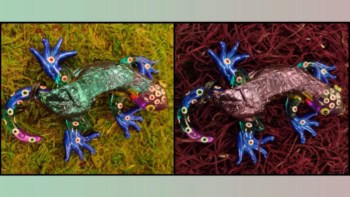Physicists in Germany have built a new kind of interferometer that could measure distances up to five hundred times more accurately than existing devices. Many rays of light interfere in the device to create a finely spaced diffraction pattern, which could reveal changes in distance a thousand times smaller than the wavelength of the light used. Yuri Ovchinnikov and Tilman Pfau of the University of Stuttgart believe that their interferometer could be used to make ultra-precise measurements and new optical switches for fibre-optic systems (Y Ovchinnikov and Tilman Pfau 2001 Phys. Rev. Lett. 87 123901).

Interferometers work by splitting a coherent beam and then recombining the different components at a detector, such as a screen. If the components are in phase when they recombine, they reinforce each other, and if they are out of phase they cancel each other out – the exact phase relationship depends on the distance each component has travelled. This leads to a characteristic pattern of bright and dark fringes on the screen, and the spacing between the fringes can be used to measure small distances and movements. The minimum spacing is half the wavelength of the light used, and this is the best resolution the device can have.
To increase this resolution, Ovchinnikov and Pfau shone a helium-neon laser at an oblique angle into the cavity between two narrowly spaced parallel mirrors. The light can take many different paths through this ‘waveguide’, and each one has a different angle of reflection from the mirrors. This means there are very many beams – or ‘modes’ – of light propagating at the same time. Each one takes a different amount of time to travel through the waveguide, which depends on its angle of reflection.
Each time a single mode of light is reflected, its phase shifts by a tiny amount. The phases of the other modes change by a slightly different amount. This means that the light waves have a very complex phase relationship when they reach the end of the waveguide. In the experiment conducted by Ovchinnikov and Pfau, this led to a diffraction pattern in which the fringes were separated by just a ninth of the wavelength of light.
The researchers plan to modify their device – known as a multimode waveguide interferometer – to increase its sensitivity even further. The fringes in the diffraction pattern get closer together as the light undergoes more reflections. This means that a narrower cavity would lead to a higher resolution, because the light would undergo more reflections as it passes through the waveguide.
“Pfau and I have been using the multimode waveguide since early 2000, but it took us six months to realise that it was a new type of interferometer”, Ovchinnikov told PhysicsWeb.


